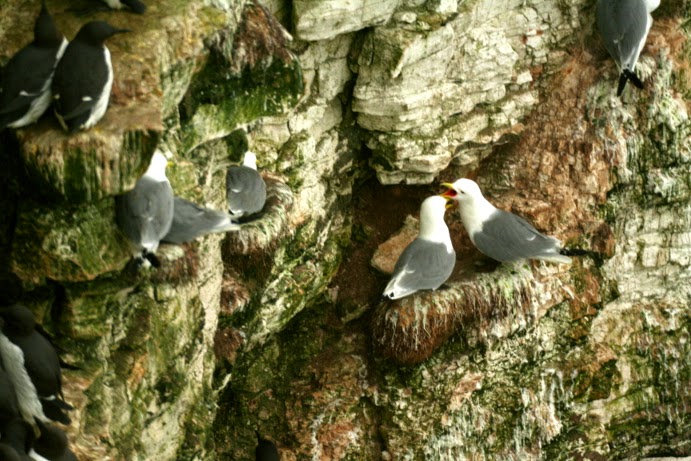 |
| Kittiwake (Rissa Tridactyla) |
So, here are the facts:
- They look almost identical to a Common Gull which is probably why, at first, I thought they were. The only way to tell them apart is by looking at the legs. A Kittiwake's are black and a gull's are orange.
- They are found all around the coast and Ireland, apart from the South-West of Ireland. They are also found on some parts of the coast of England and Scotland but only in the Summer.
- Their Scientific Name (Rissa Tridactyla) comes from both Iceland and Greece. Rita (Ic) = the Kittiwake + Tridactulos (Gr) = three toed. This makes: the three toed Kittiwake.
- They are an Amber Status bird even though there are 380,000 breeding pairs in the UK. This is because there has been a recent decline in birds.
 |
| It was great watching they fly about |
- They have a rather large typical lifespan of 12 years but the oldest bird stuck it out for 16 years more! It was 28 years, 6 months and 5 days.
- They are 39cm in length and they have a 108cm wingspan. Both Male and Female birds weigh just 410g.
- They eat a variety of things like Fish, Shrimps and Worms which is understandable as they only live on cliffs.
- They, sadly, have an array of threats to their species. They are:
 |
| Settling into their nests. |
- Depletion of food resources (from over fishing).
- Marine oil spills.
- Chronic oil pollution.
- They are vulnerable to the virus Avian Influenza or Bird Flu.
Here are some links to some more information:
Hope you enjoyed,
Z.
Lovely photos, as always! I love spending time at the coast, seeing the birds is always a highlight! - Tasha
ReplyDeleteYorkshire coast is great Tasha - full of fossils and birds and great places like Whitby, Scarborough and Robin Hoods Bay.
Delete